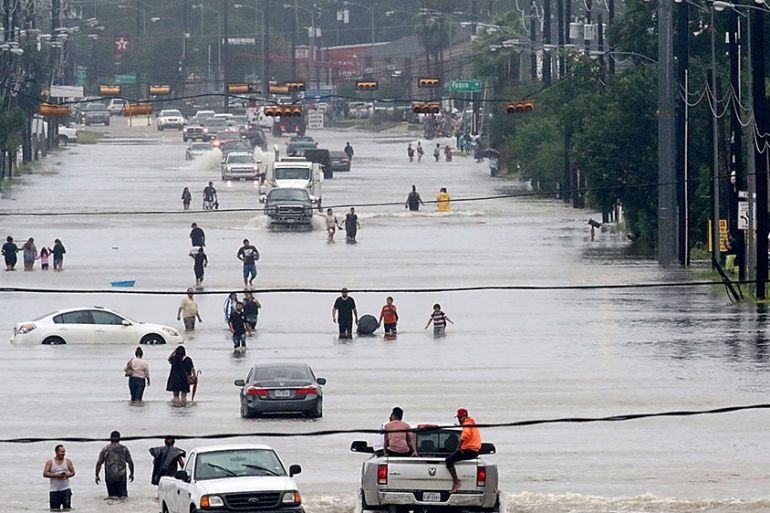The hurricane season comes to an end
The Atlantic and Caribbean had 17 named storms in one of the wettest and wildest seasons on record.

November 30 marked the end of the Atlantic hurricane season, and what a season it has been.
Not only have we had a very active season, we’ve also had one of the wettest and wildest on record.
Keep reading
list of 4 itemsCould shipping containers be the answer to Ghana’s housing crisis?
Thousands protest against over-tourism in Spain’s Canary Islands
Holding Up the Sky: Saving the Indigenous Yanomami tribe in Brazil’s Amazon
The 2017 Atlantic hurricane season has been described as “hyperactive and extremely destructive”. There were 17 named storms, making it the fifth most active season on record.
All 10 of the season’s hurricanes occurred in a row – the greatest number of consecutive hurricanes in the satellite era.
And this season was by far the costliest on record. Damages are currently estimated at more than $368bn – more than double the cost of the 2005 season, which was of course the year of Hurricane Katrina.
Professor Auroop Ganguly from Northeastern University in Boston Massachusetts is an expert in extreme weather and infrastructural resilience.
He points out that it is difficult to say with certainty that such weather events are caused by climate change. To make any such claim, he explained, one needs years and years of weather data.
If anything, Ganguly said, “there’s some empirical support that the overall frequency may decrease slightly in a warming world. What’s becoming more and more clear, though, is that the ones we do see may become even more extreme”.
Warmer oceans act as engines for hurricanes, revving them up. And if the atmosphere is warmer, there’s more water vapour in the air that a hurricane can pull down. In short, warmer air can hold more moisture than cooler air.
The season brought a number of remarkable storms, many of which were notable for different reasons.
Harvey, Irma and Maria
Hurricane Harvey, which caused widespread flooding across much of eastern Texas and in particular, Houston, was the wettest hurricane to hit the US since records began. The slow-moving storm dumped more than 1500mm of rain across parts of the state. More than 30,000 people were displaced by flash floods.
Hurricane Irma was the strongest hurricane to form in the Atlantic since Wilma in 2005, and was the first Category 5 storm to strike the Leeward Islands on record. It caused catastrophic damage in Barbuda. Around 95 percent of the island’s crops, buildings and vehicles were destroyed.
Irma later went on to cause flooding across parts of western Florida.
Then there was Hurricane Jose. This was the most powerful Atlantic storm of the season. Thankfully, it spent most of its time out in the open waters, eventually dissipating of the east coast of the US.
Hurricane Maria was the tenth strongest Atlantic storm on record, and the worst natural disaster in the history Dominica.
Maria came just a fortnight after Hurricane Irma, causing catastrophic damage across the whole island, leading to a total communication blackout. It then went on to wreak widespread destruction across Puerto Rico as a top end Category 4 storm.
This was followed by Hurricane Nate, a large, fast-moving storm that hit Central America before making landfall on the US Gulf Coast.
The season was still in full swing when Hurricane Ophelia formed as the most easterly Atlantic hurricane on record. Ophelia travelled into northwestern Europe, causing damage across Ireland, ironically on the 30th anniversary of the Great Storm that struck southern England in October 1987.
All of these events point towards possible climate change, and in particular, global warming. With the higher sea temperatures over a greater area, we may find that weather like this could become the rule rather than the exception in the years ahead.